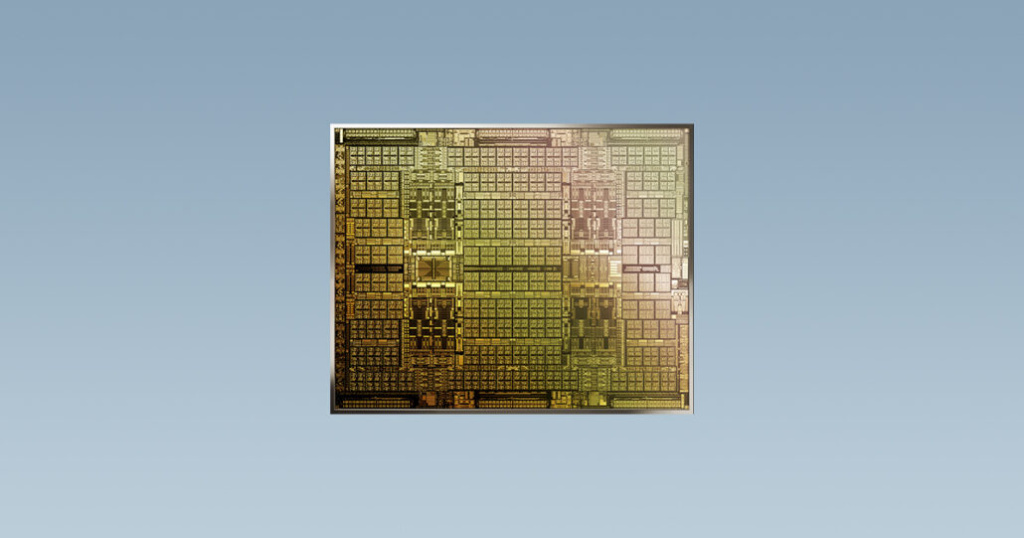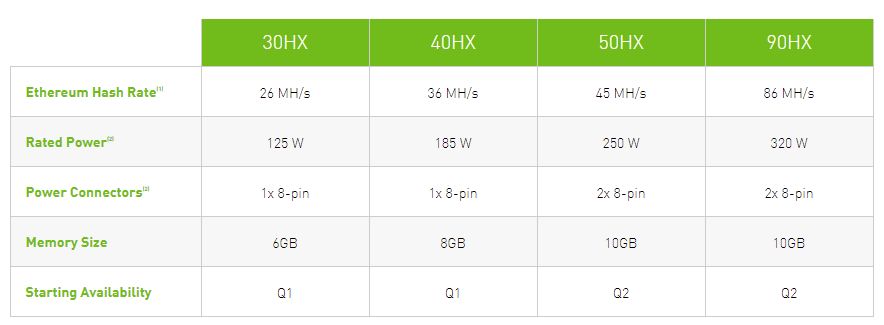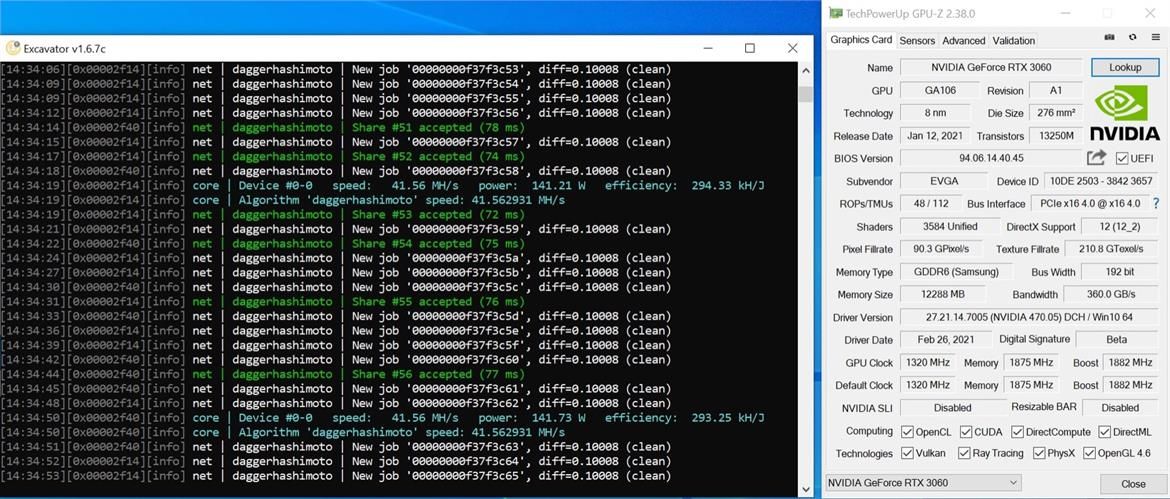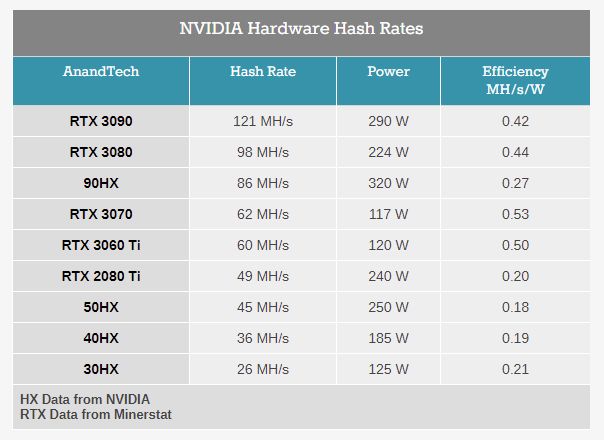Nvidia CMP HX Explained – Will It Make A Difference?
Cryptocurrency has taken the world by a storm in the past few years, with coins like Bitcoin crossing the $60,000 mark in value as of the time of writing. It was not long ago that even tech-savvy people were betting against crypto-currency in general. Time has turned the tides in the favor of crypto-currency, however, and 2020-21 has seen the biggest Cryptocurrency boom ever recorded since the inception of the concept of online currency. This massive rise in the value of crypto-currency has impacted multiple industries, with the PC hardware and automotive industries being the most impacted ones.

2020 has been an unusual year in many regards, but while other financial and economic sectors were tumbling, crypto-currency shot through the stratosphere in the meantime, taking advantage of a variety of unique scenarios that came to the forefront in the pandemic. One of the major side-effects of this meteoric rise of crypto-currency value was the shortage of PC hardware components that it created. Graphics cards, especially, were seriously impacted due to the crypto-currency boom and the subsequent increase in the practice of cryptocurrency mining. Nvidia’s new RTX 3000 series and AMD’s new RX 6000 series of graphics cards were the ones most severely affected by this situation, and they have still not returned to normalcy as of the time of writing, roughly 6 months after the announcement of the RTX 3000 series.
Announcement
Amidst the gloomy stock situation of Nvidia GeForce RTX 3000 series graphics cards and the low production numbers, Nvidia decided to launch a separate graphics card lineup for crypto-currency miners to alleviate some of the strain on the RTX 3000 series stock. The Nvidia CMP HX or Cryptocurrency Mining Processor series is a dedicated crypto-mining series of graphics cards that would have multiple SKUs at different price points.
This announcement could not have come at a better time, however, the efficacy of this step is still up in the air. Crypto-miners generally do not buy mining-specific hardware unless it offers much better performance than mainstream options, but this might change with the CMP HX cards since their counterparts are not readily available. The GeForce RTX 3000 series and the Radeon RX 6000 series are the graphics cards that are competing directly for market share in 2021, but the whole market scenario has suddenly changed to accommodate crypto-mining cards as well due to the rise of the value of Cryptocurrency.
What is CMP HX?
The Nvidia Cryptocurrency Mining Processor HX series of cards are dedicated GPUs for professional mining that is aimed squarely at crypto-currency miners that are using mainstream GeForce or Radeon graphics cards for mining in 2021. This series has been released to alleviate some of the pressure on the stock of the new RTX 3000 series from Nvidia, which has already been underwhelming, to say the least. Crypto-miners have further wreaked havoc on the availability of the RTX 3000 series since these newly-released GPUs are excellent at crypto-mining. Combined with the meteoric rise in the value of crypto-currency in 2021, the stage is set for crypto-miners with large-scale operations to make huge profits with mining.
Enter the CMP HX series of GPUs. These are mining-specific cards that do not possess any video outputs such as HDMI, DVI, or Displayport. This is common in mining cards because they need not be connected to a display in order to perform their function. These cards serve their computational power directly to the computer through the PCI Express slot, and therefore the computer can use that power to perform complex crypto-mining operations.
Nvidia is confident about its CMP HX series and predicts that it will help improve the abysmal stock situation of the RTX 3000 series of graphics cards:
To address the specific needs of Ethereum mining, we’re announcing the NVIDIA CMP, or, Cryptocurrency Mining Processor, product line for professional mining.
CMP products — which don’t do graphics — are sold through authorized partners and optimized for the best mining performance and efficiency. They don’t meet the specifications required of a GeForce GPU and, thus, don’t impact the availability of GeForce GPUs to gamers.
For instance, CMP lacks display outputs, enabling improved airflow while mining so they can be more densely packed. CMPs also have a lower peak core voltage and frequency, which improves mining power efficiency.
Creating tailored products for customers with specific needs delivers the best value for customers. With CMP, we can help miners build the most efficient data centers while preserving GeForce RTX GPUs for gamers.
This section from Nvidia’s press release definitely shows that Nvidia is banking on CMP HX to help improve the availability situation that is plaguing GeForce RTX 3000 series GPUs currently.
Products
As of the time of writing, Nvidia has announced the following SKUs in the CMP HX series of mining cards.

There is some interesting information to decipher here. First, the entry-level 30HX SKU seems to be based on some variant of the GTX 16-series of graphics cards that came out with the Turing lineup. It provides a modest Ethereum Hash Rate of 26 MH/s which can be trounced easily even by the old AMD RX 580 8GB card based on the Polaris architecture. This SKU has a rated power of 125 W and would require a single 8-pin PCIe connector. The memory size is 6GB of presumably GDDR6 memory, and it would be available in Q1 of 2021 according to Nvidia.
One of the most interesting SKUs is the 90HX which seems like a rebranded RTX 3080 due to its power budget and the VRAM size. The 90HX provides an Ethereum Hast Rate of 86 MH/s which is lower than the RTX 3080 which clocks in at 98 MH/s. The rated power for the 90HX is 320W which is roughly the same as the RTX 3080. Another feature the 90HX shares with the RTX 3080 is the VRAM capacity, with both the cards having 10GB of presumably GDDR6X although that has not been confirmed yet. Nvidia is planning to release the 90HX SKU in Q2 of 2021. Judging by the raw spec sheet it should be considerably cheaper than the RTX 3080 in order to attract miners away from the GeForce offering.
Limiting GeForce Cards
Clearly, just releasing alternative Crypto-mining GPUs was not going to make a significant impact in the current situation and Nvidia took that into account. Along with the release of the CMP HX, Nvidia is now putting hard limiters on its GeForce series cards to limit their performance in Ethereum mining. The first card to receive this treatment is the GeForce RTX 3060 12GB, which is significantly locked down when it comes to its crypto-mining capabilities.
Nvidia claims that the hard limiter is not something that can be easily removed or bypassed by the end-user. The press release from Nvidia stated the following:
It’s not just a driver thing. There is a secure handshake between the driver, the RTX 3060 silicon, and the BIOS (firmware) that prevents removal of the hash rate limiter.
Elaborating further on the decision of halving the hashrate of the GeForce RTX 3060, Nvidia stated:
RTX 3060 software drivers are designed to detect specific attributes of the Ethereum cryptocurrency mining algorithm, and limit the hash rate, or cryptocurrency mining efficiency, by around 50 percent.
That only makes sense. Our GeForce RTX GPUs introduce cutting-edge technologies — such as RTX real-time ray-tracing, DLSS AI-accelerated image upscaling technology, Reflex super-fast response rendering for the best system latency, and many more — tailored to meet the needs of gamers and those who create digital experiences.
This step, combined with the release of the CMP HX line of dedicated mining cards, should prove effective against the onslaught of crypto-miners of GeForce and other gaming graphics cards. However, there are some problems with this plan.
Problems
Firstly, the hardware limiter that Nvidia put on the RTX 3060 has already been bypassed as of March 16th, 2021. The GeForce driver 470.05 allowed the RTX 3060 to hash up to 41 MH/sec which is almost double the 20 MH/sec that was allowed beforehand. This defeats the entire purpose of the hard-lock.

Secondly, the CMP HX mining cards are not available in nearly the same quantity as the GeForce cards. As of the time of writing, only one SKU has been released which is the 30HX and that too received a lukewarm reception due to its poor hashrate. The other, more powerful SKUs are supposed to launch later and that does not help the current shortage of gaming GPUs that gamers are facing right now.
Add all these factors together and suddenly it does not seem like the GPU shortage would be easing up any time soon.
Why Miners Avoid Dedicated Hardware?
Another factor that should be taken into account here is that crypto-miners generally avoid dedicated mining hardware, especially graphics cards. It’s not like the CMP HX cards are the first dedicated mining GPUs ever released. Nvidia has released mining-specific cards based on the Pascal and Turing architecture as well and they never really got popular among the mining community.
There are a couple of reasons why miners avoid dedicated hardware. The cards that are branded as mining-specific GPUs generally do not provide the same value-for-money as the gaming graphics cards. This is because, more often than not, they are made from the same silicon that goes into their gaming counterparts, and that means that they face the same stock and availability issues as well. This leads to a similar pricing scheme as their mainstream counterparts, just slightly discounted. Given that mining-specific cards lack a lot of the features that gaming graphics cards possess, like video outputs, the mining-specific GPUs suddenly do not seem like such a great investment.
Another big reason why miners avoid mining-specific graphics cards is their resale. Cryptocurrency value is always going through ups and downs and you never know when the market will crash next. However, it is certain that someday the bubble will burst and the value of Cryptocurrency will come crashing down, as it did in 2017. When this happens, all the crypto-miners try to sell their mining-hardware in order to recoup their investment. Gaming graphics cards can be easily sold to gamers on the used market, while the same cannot be said for mining-specific cards. Crypto-miners cannot sell these cards to recoup their investment, therefore they tend to avoid them in the first place.
Finally, the dedicated hardware often performs worse in mining than the mainstream gaming graphics cards. This is also evident from the claimed hashrate numbers that Nvidia has provided for the CMP HX series. If we compare those numbers with the mainstream graphics cards and their data, we can clearly see that the gaming graphics cards outperform the mining cards by a significant margin in some cases. The RTX 3080 gets 98 MH/s in Ethereum mining while the 90HX which is based on the RTX 3080 gets only 86 MH/s. This is another reason why crypto-miners avoid mining-specific hardware and rather opt for mainstream gaming graphics cards.

Solution to Shortage?
So what does the release of the CMP HX series mean for the average gamer who is waiting to buy a graphics card? Well, if the current data is anything to go by, the release of the CMP HX mining-specific cards will not impact the stock and availability situation in any significant way. The series might be successful in a way that Nvidia makes a profit off of these cards, but it does not seem like it will have any meaningful impact on the current situation, be it positive or negative.
Nvidia’s attempt to lock the mining capabilities of the RTX 3060 fell through as well, but that had the potential to be a more effective step against crypto-miners than the release of the CMP HX. In fact, Nvidia can still save the stock of its upcoming RTX 3000 series of graphics cards if it puts hard-limiters for crypto-mining in those graphics cards and does not allow any driver workaround. The removal of the hard limiter from the RTX 3060 was also a mistake that Nvidia admitted to, so they should be careful that no workaround is possible with the next RTX 3000 series cards.
As of right now, the CMP HX series of mining cards looks to be underwhelming at best. The announced SKUs are just rebranded versions of the existing Ampere and Turing GPUs so they might also face the same shortage and availability issues that have plagued their gaming counterparts. Furthermore, their mining performance is not nearly as good as it should have been to attract crypto-miners away from the mainstream GPUs to the mining-specific cards. Nvidia should focus on tightly locking down the mining performance of its existing and upcoming graphics cards in order to force the crypto-miners towards the CMP HX series if it wants to improve the current situation for gamers.
If you are a crypto-miner and are looking to purchase a CMP HX GPU for your mining operation, you might also want to reconsider based on the claimed performance of the announced SKUs. The hashrate of the upcoming CMP GPUs does not seem to be as good as some of their alternative GeForce cards, and therefore they should be avoided unless they are priced significantly cheaper than their mainstream counterparts.





